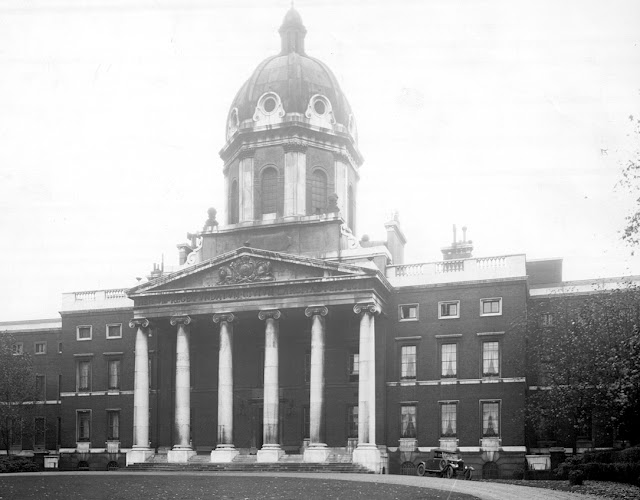In Europe during the medieval era. the insane were cared for in monasteries. A few towns had towers where madmen were kept (called Narrentürme or fools' tower).
The first recorded psychiatric hospital in Europe was the Bethlem Royal Hospital in London, it has been a part of London since 1247 when it was built as a priory. It became a hospital in 1330 and admitted its first mentally ill patients in 1407; there were nine in total. It has been variously known as St. Mary Bethlehem, Bethlem Hospital, Bethlehem Hospital and Bedlam (origin of the word "bedlam" describing chaos or madness).
Conditions were consistently dreadful, and the care amounted to little more than restraint. There were 31 patients and the noise was "so hideous, so great; that they are more able to drive a man that hath his wits rather out of them." Violent or dangerous patients were manacled and chained to the floor or wall. Some were allowed to leave, and licensed to beg.
In 1598 an inspection showed neglect; the "Great Vault" (cesspit) badly needed emptying, and the kitchen drains needed replacing. There were 20 patients there, one of whom had been there over 25 years.In 1620, patients of Bethlem banded together and sent a "Petition of the Poor Distracted People in the House of Bedlam (concerned with conditions for inmates)" to the House of Lords.
The Hospital became famous and notorious for the brutal ill-treatment meted out to the mentally ill. In 1675 Bedlam moved to new buildings in Moorfields designed by Robert Hooke, outside the City boundary.
The lunatics housed at Bethlem were first called patients in 1700; shortly after curable and incurable wards were set up which signaled a move from mental illnesses being considered an infliction to a curable disease.
In the 18th century people used to go to Bedlam to stare at the lunatics. For a penny one could peer into their cells, view the freaks of the "show of Bethlehem" and laugh at their antics. Entry was free on the first Tuesday of the month. In 1814 alone, there were 96,000 such visits.




This comment has been removed by the author.
ReplyDelete